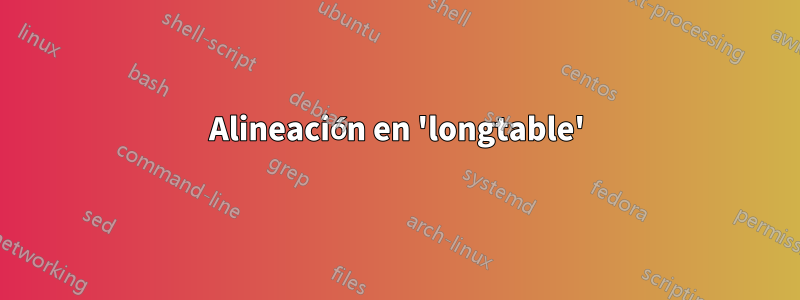
\documentclass[12pt] {article}
\usepackage{amsmath}
\usepackage{amssymb}
\usepackage{multirow}
\usepackage{multicol}
\usepackage{longtable}
\begin{document}
\begin{longtable}{|c|c|c|}
\hline
\pmb{Operation} & \pmb{Codes} & \pmb{Output}\\\hline
\endhead
\multirow{3}{*}{Transpose} &{\fontfamily{qcr}\selectfont A=Matrix([[1,2,3],[3,2,1],[1,1,5]])} & \multirow{3}{*}{$\left(
\begin{matrix}
1 &2 &3\\
3 &2 &1\\
1 &1 &5
\end{matrix}
\right)$}\\
& {\fontfamily{qcr}\selectfont B=A.transpose()} &\\
& {\fontfamily{qcr}\selectfont show(B)} &\\\hline
\multirow{2}{*}{Determinant} &{\fontfamily{qcr}\selectfont A=Matrix([[1,2,3],[3,2,1],[1,1,5]])} & \multirow{2}{*}{-16}\\
& {\fontfamily{qcr}\selectfont A.det()} & \\\hline
\multirow{3}{*}{Adjoint} &{\fontfamily{qcr}\selectfont A=Matrix([[1,2,3],[3,2,1],[1,1,5]])} & \multirow{3}{*}{$\left(
\begin{matrix}
1 &2 &3\\
3 &2 &1\\
1 &1 &5
\end{matrix}
\right)$}\\
& {\fontfamily{qcr}\selectfont B=A.adjugate()} &\\
&{\fontfamily{qcr}\selectfont show(B)} &\\\hline
\end{longtable}
\end{document}
A través de mi codificación aparece que
- en la tercera columna (columna de Salida), luego el paréntesis tocó las líneas horizontales superior e inferior
- Además, en la columna central, las líneas no están alineadas a la izquierda. ¿Cómo puedo solucionar estos problemas?
Respuesta1
Aquí hay una solución que no requiere todas esas \fontfamily{qcr}\selectfontdirectivas.
\documentclass[12pt]{article}
\usepackage{geometry}
\usepackage{amsmath}
\usepackage{amssymb}
\usepackage{multirow}
%%%\usepackage{multicol} % not needed
\usepackage{longtable}
% new:
\usepackage{array,courier}
\begin{document}
\begin{longtable}{| l | >{\ttfamily}l | c |}
\hline
\textbf{Operation} & \multicolumn{1}{c|}{\textbf{Codes}} & \textbf{Output}\\
\hline
\endhead
% body of table:
\multirow{3}{*}{Transpose} &
A=Matrix([[1,2,3],[3,2,1],[1,1,5]]) &
\multirow{3}{*}{\small $
\begin{pmatrix}
1 &2 &3\\
3 &2 &1\\
1 &1 &5
\end{pmatrix}
$} \\
& B=A.transpose() & \\
& show(B) & \\
\hline
\multirow{2}{*}{Determinant} &
A=Matrix([[1,2,3],[3,2,1],[1,1,5]]) &
\multirow{2}{*}{$-16$}\\
& A.det() & \\
\hline
\multirow{3}{*}{Adjoint} &
A=Matrix([[1,2,3],[3,2,1],[1,1,5]]) &
\multirow{3}{*}{\small $
\begin{pmatrix}
1 &2 &3\\
3 &2 &1\\
1 &1 &5
\end{pmatrix}
$} \\
& B=A.adjugate() & \\
& show(B) & \\
\hline
\end{longtable}
\end{document}
Apéndicepara abordar la consulta de seguimiento del OP: Las dos macros principales proporcionadas por LaTeX para dibujar líneas horizontales en estructuras similares a tablas, \hliney \cline, no son particularmente sofisticadas. En particular, el espacio entre las líneas dibujadas por \hliney \cliney el material encima/debajo de las líneas es frecuentemente lamentablemente inadecuado. Tú mismo te has encontrado con esto, ¿no?
Ahora, se podría probar un "enfoque de curita" para solucionar este problema, insertando un espacio en blanco vertical, a mano, encima o debajo de varias líneas. Me gustaría recomendarte que consideres hacer algo muy diferente: cargar elpestañaspaquete y aprenda a utilizar sus macros a nivel de usuario: \toprule, \midrule, \bottomrule, \cmidruley \addlinespace. Los espacios en blanco pueden ser tan efectivos para formar un separador visual como lo puede ser una línea negra. Un efecto secundario feliz de usar las macros del booktabspaquete es que casi nunca es necesario contemplar la posibilidad de utilizar el tipo de formato visual que menciona en sus comentarios de seguimiento.
Ah, deshacerse de todas las reglas verticales también es algo con lo que deberías familiarizarte mucho. Créame, esas líneas verticales no se perderán.
\documentclass[12pt]{article}
\usepackage{geometry}
\usepackage{amsmath}
\usepackage{amssymb}
\usepackage{multirow}
%%%\usepackage{multicol} % not needed
\usepackage{longtable}
% new:
\usepackage{array,courier,booktabs}
\begin{document}
\begin{longtable}{@{} l >{\ttfamily}l c @{}}
\toprule
\textbf{Operation} &
\multicolumn{1}{c}{\textbf{Codes}} &
\textbf{Output}\\
\midrule
\endhead
\bottomrule
\endlastfoot
% body of table:
\multirow{3}{*}{Transpose} &
A=Matrix([[1,2,3],[3,2,1],[1,1,5]]) &
\multirow{3}{*}{$
\begin{pmatrix}
1 &2 &3\\
3 &2 &1\\
1 &1 &5
\end{pmatrix}$} \\
& B=A.transpose() &\\
& show(B) & \\
\addlinespace
\multirow{2}{*}{Determinant} &
A=Matrix([[1,2,3],[3,2,1],[1,1,5]]) &
\multirow{2}{*}{$-16$}\\
& A.det() & \\
\addlinespace
\multirow{3}{*}{Adjoint} &
A=Matrix([[1,2,3],[3,2,1],[1,1,5]]) &
\multirow{3}{*}{$
\begin{pmatrix}
1 &2 &3\\
3 &2 &1\\
1 &1 &5
\end{pmatrix}$}\\
& B=A.adjugate() & \\
& show(B) & \\
\end{longtable}
\end{document}




